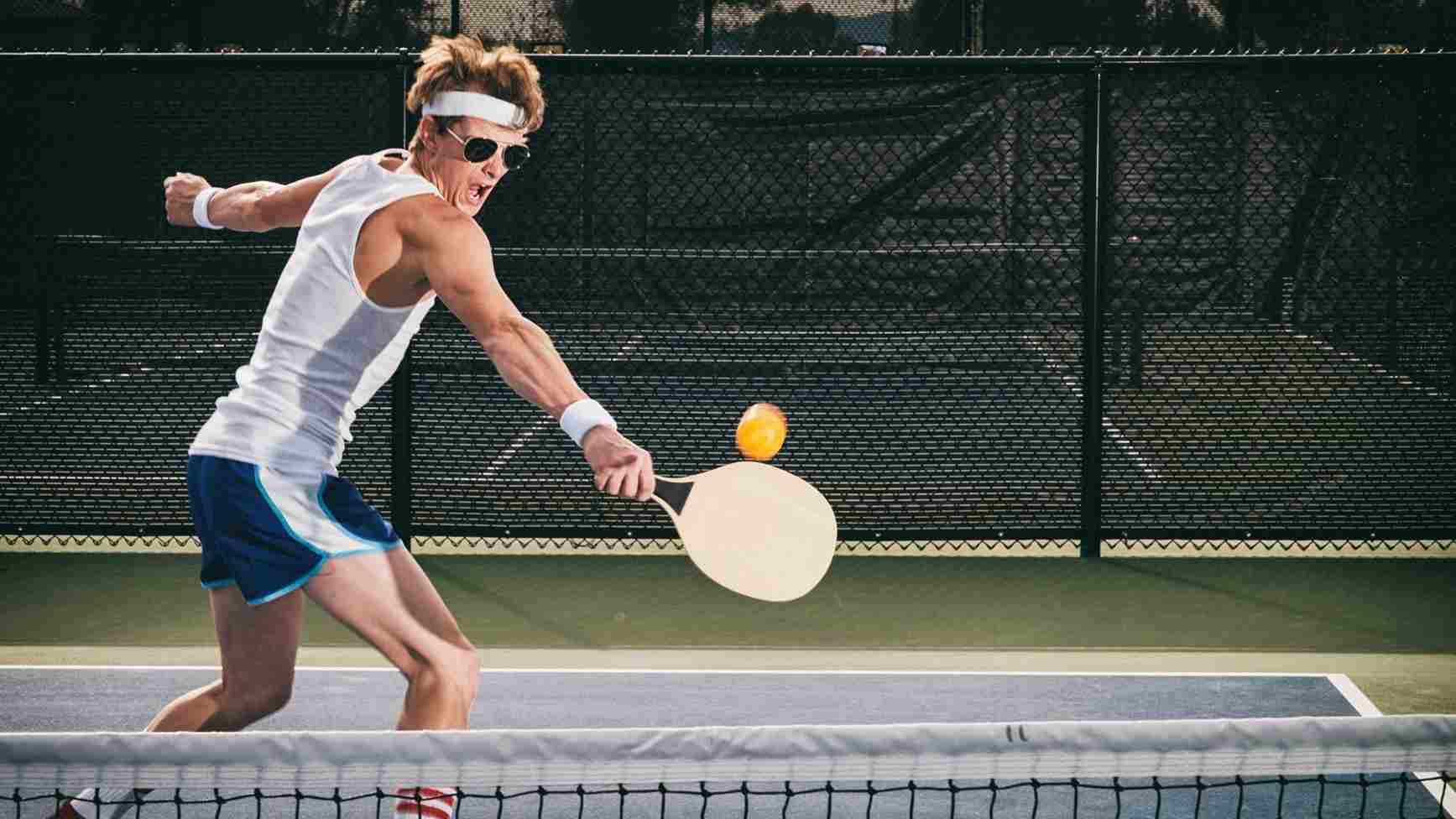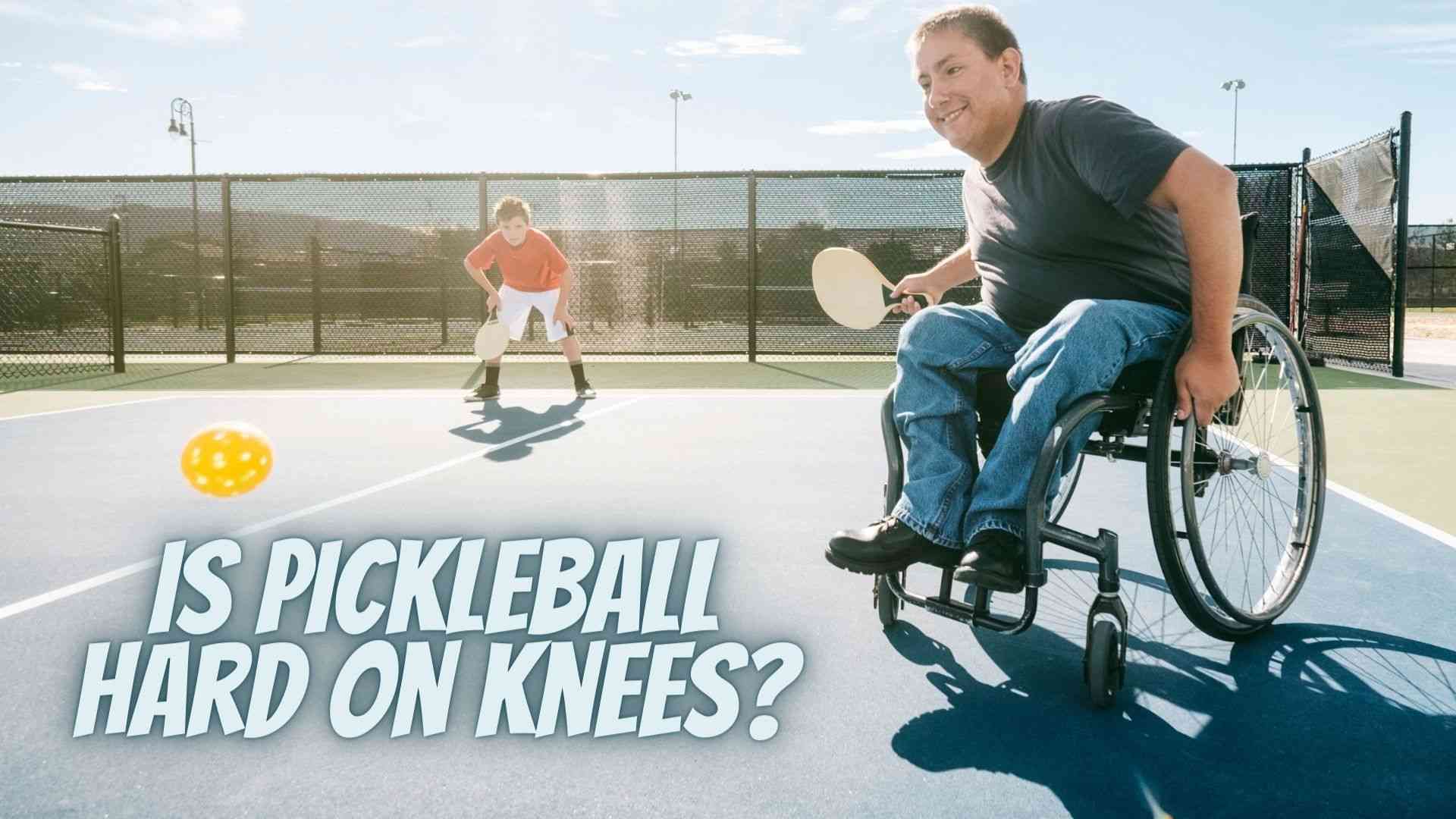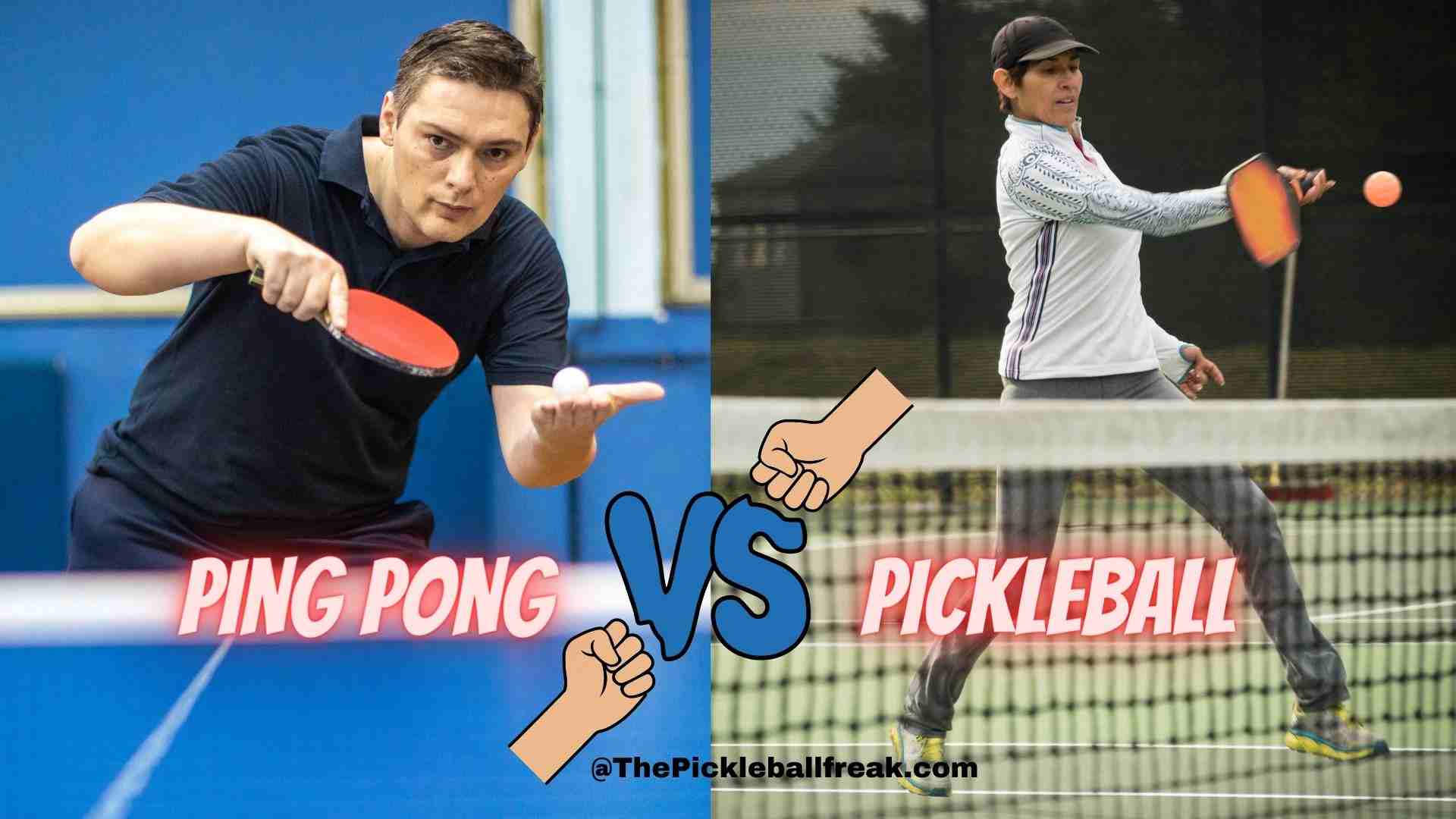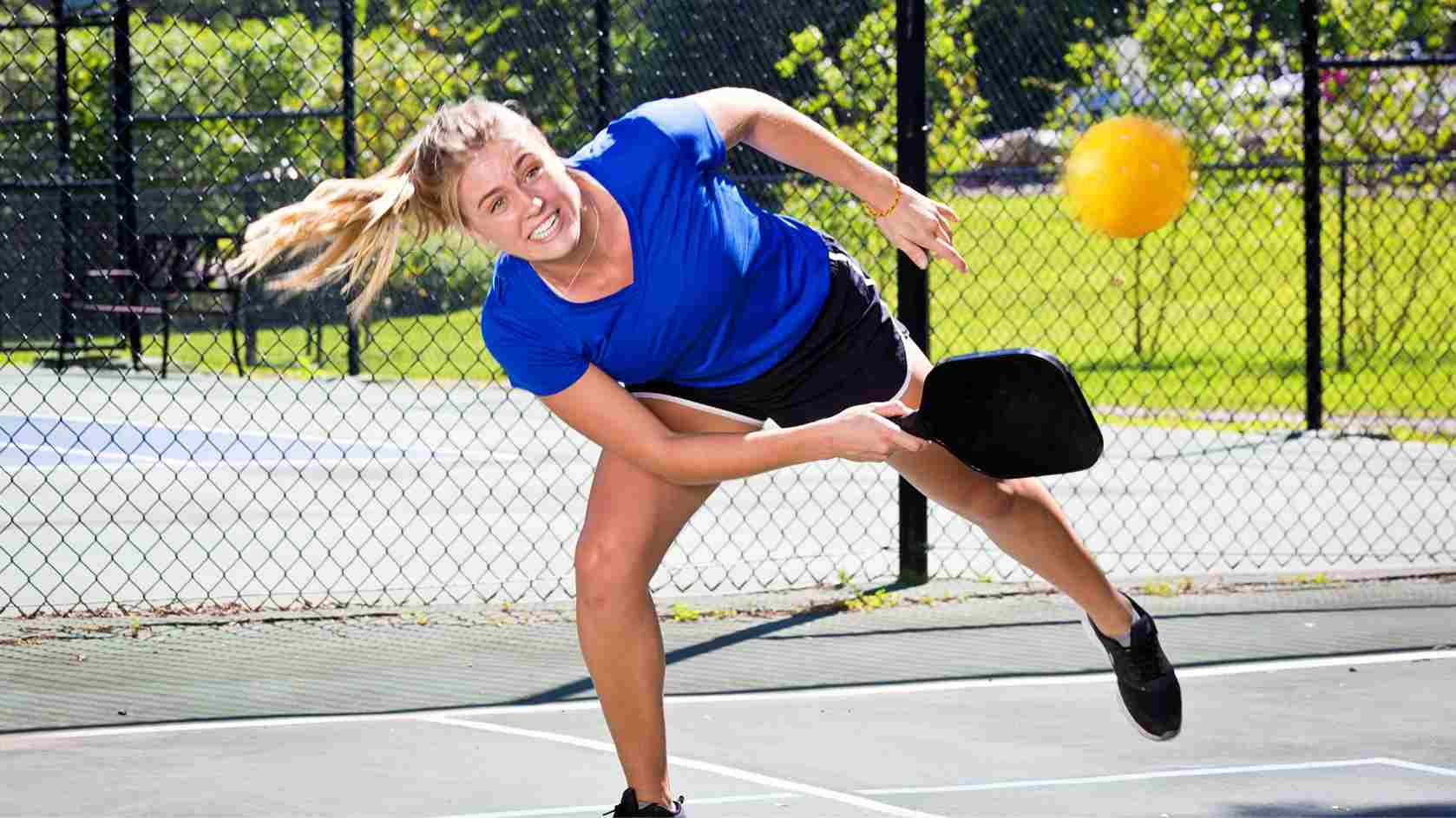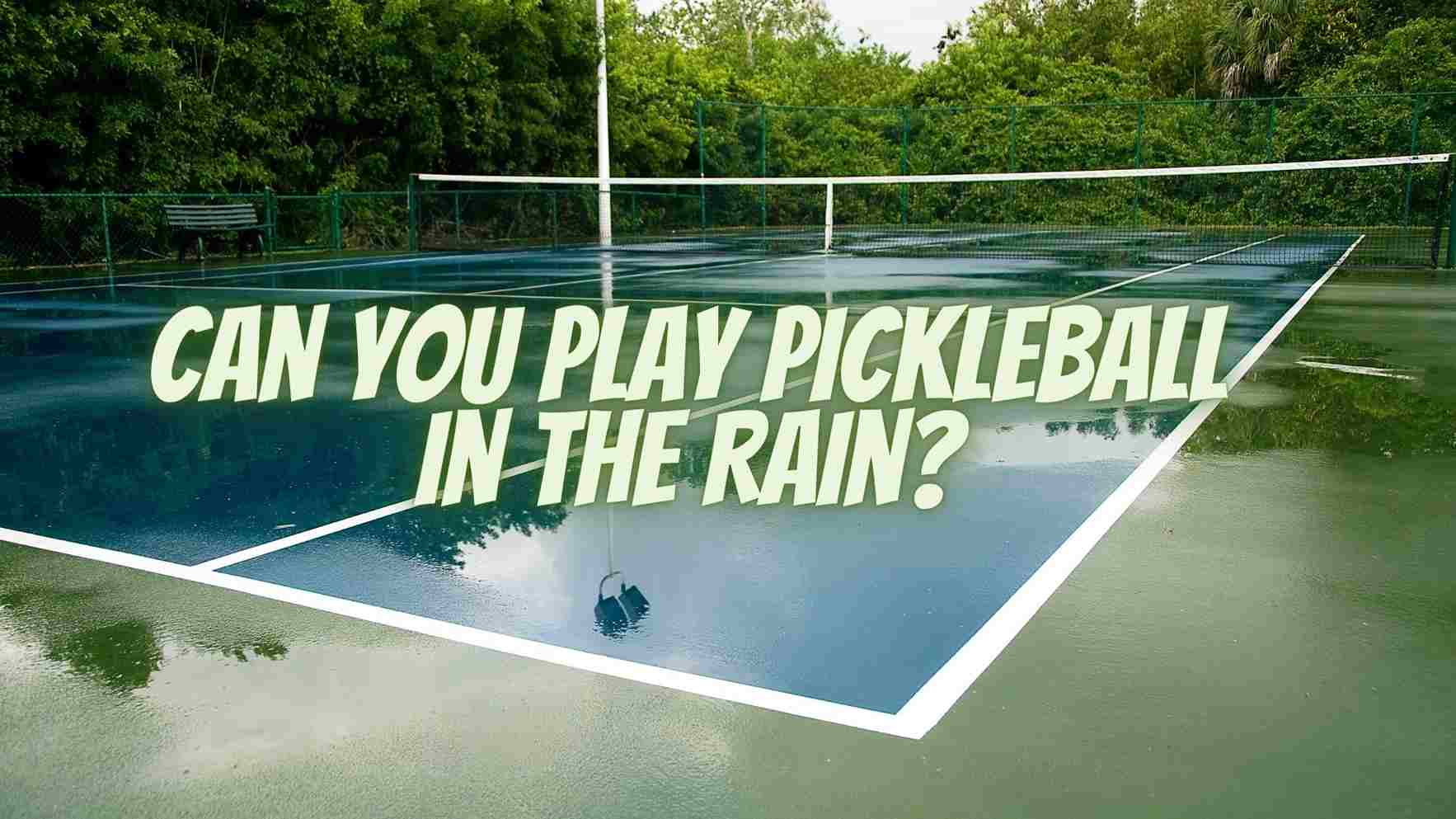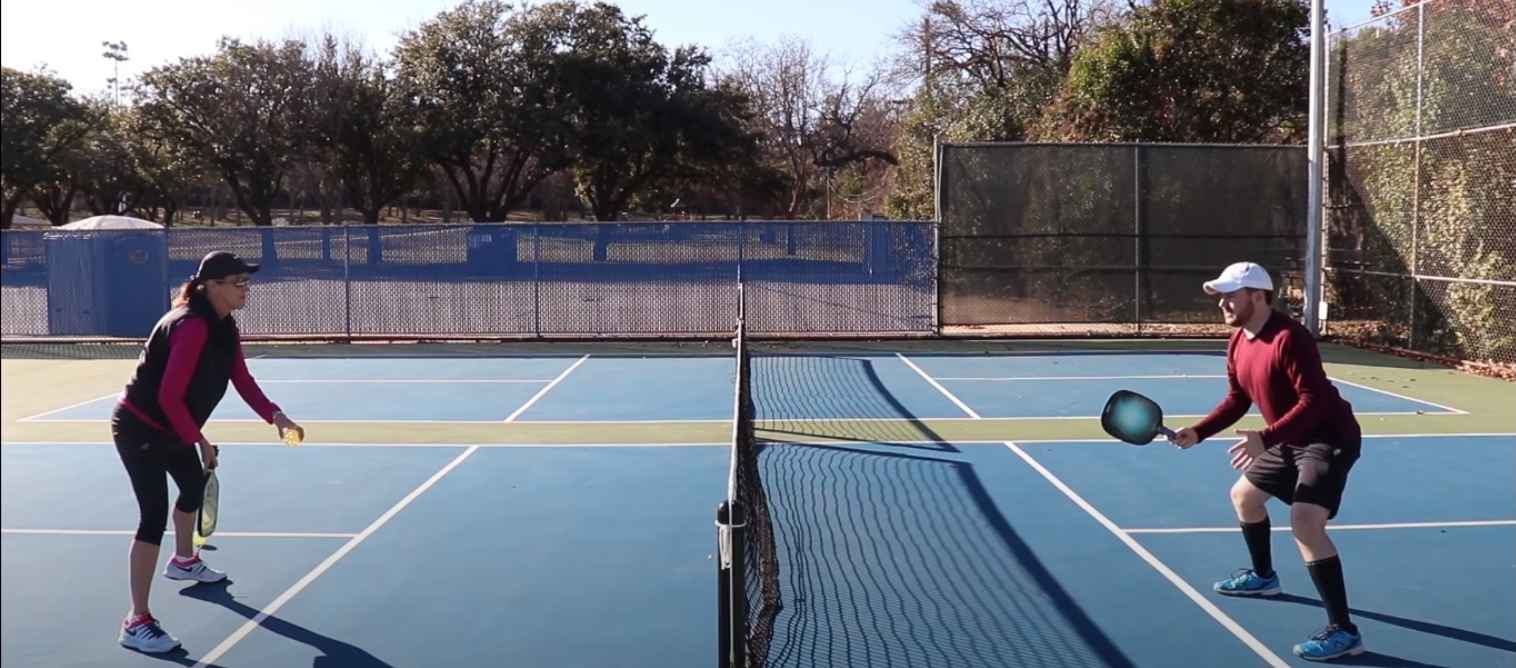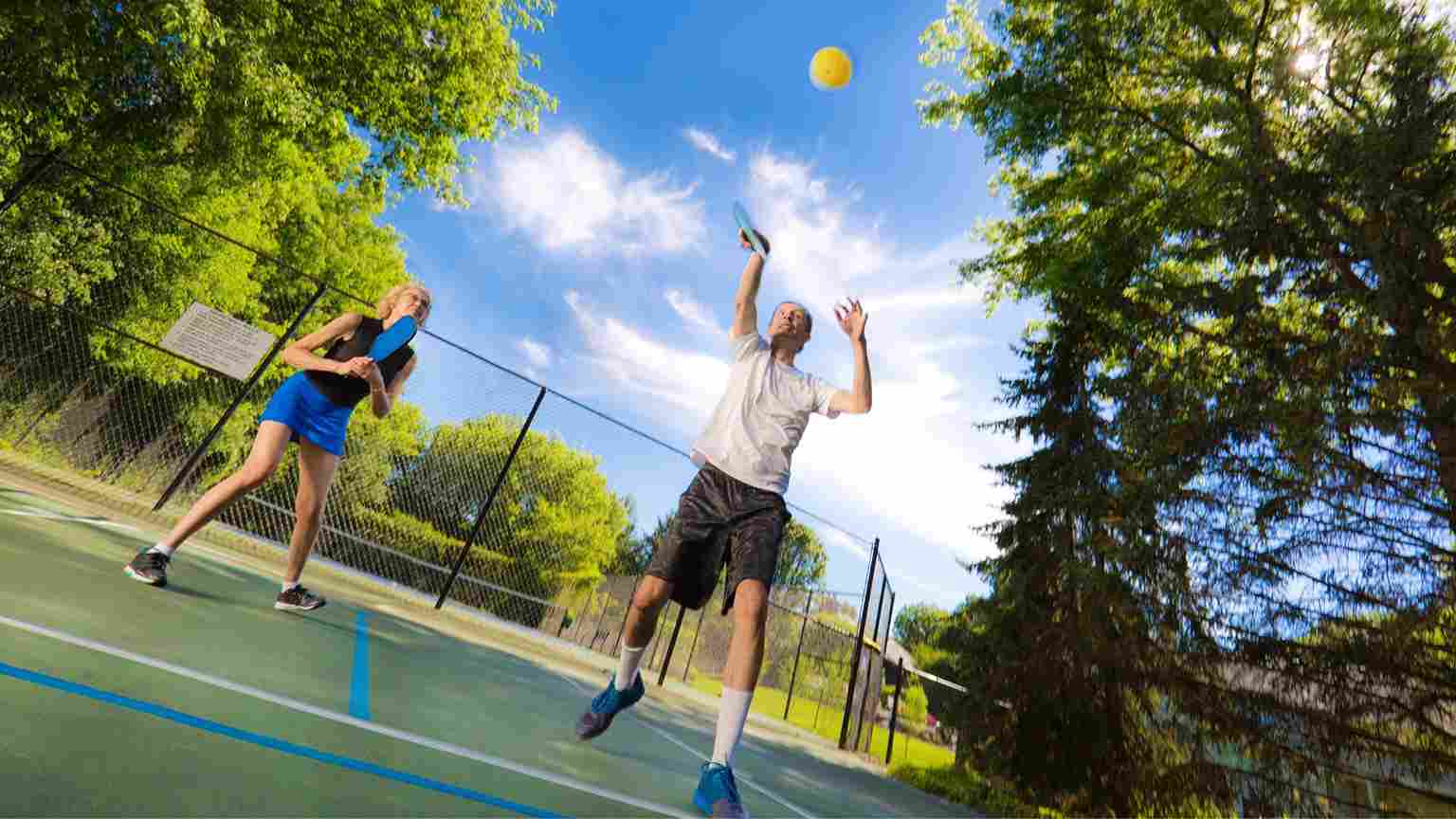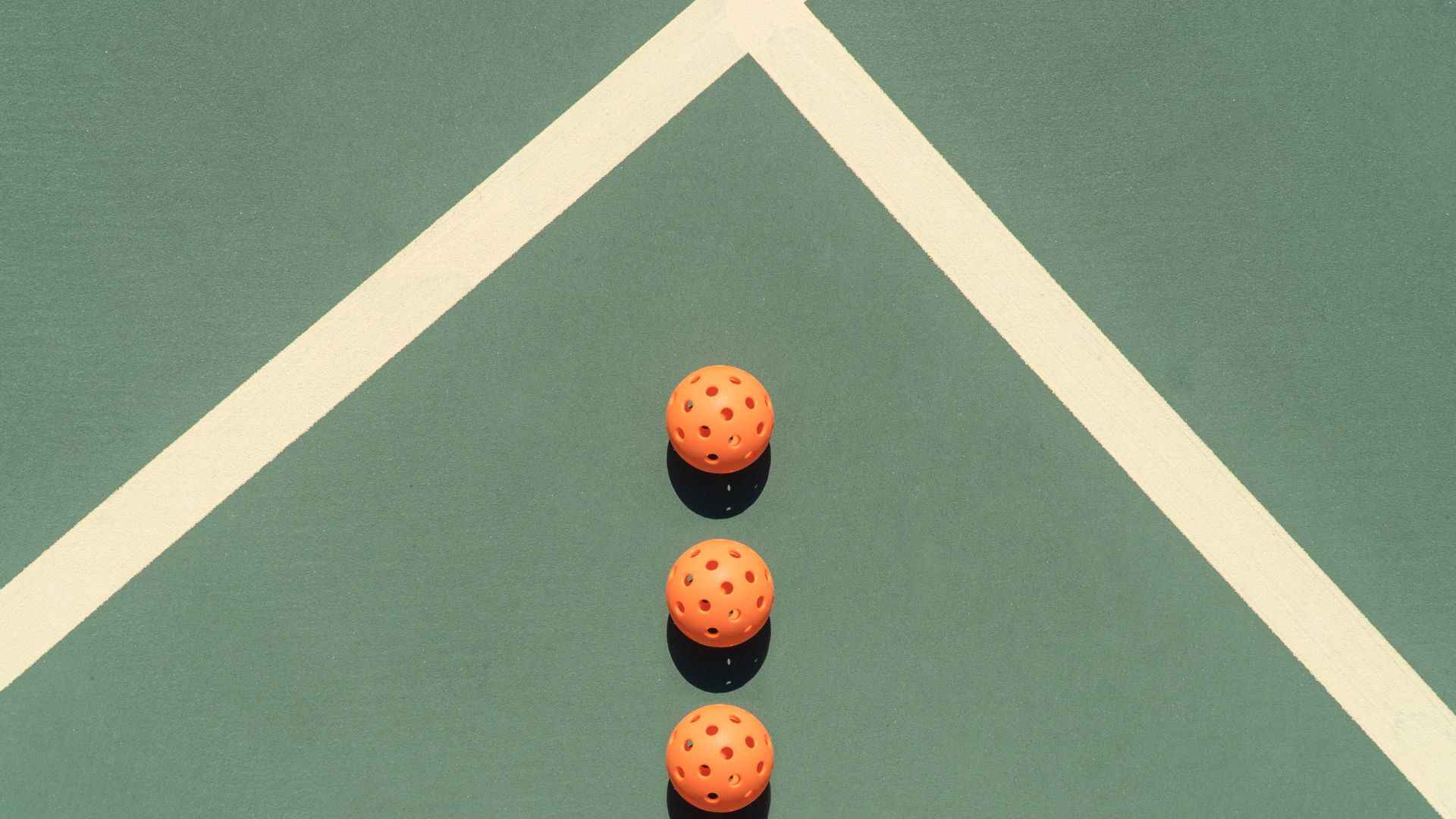
Are you looking to set up a pickleball court in your backyard or a temporary location? Temporary pickleball court lines are a great solution for creating a court without the need for permanent markings. Using this guide, you’ll be able to set up pickleball court markings barriers.
Temporary pickleball court lines can be easy to set up on any kind of existing court. You can also remove them at any time if you don’t want to play pickleball anymore. If you have an existing tennis court, then you just need to add temporary court markings and a net to the court, and you’re done with court construction.
Temporary pickleball court lines can be set up with any kind of material like adhesive tape, chalk, or temporary colors. It can also depend on the type of surface and if you want to build a court for a longer time or not.
Learn how to set up a pickleball court quickly and easily with temporary pickleball court lines. Discover the benefits of this cost-effective solution for creating a court anywhere, anytime.
With detailed information on the different zones of play and the role of pickleball court barriers in separating courts, you’ll have all the knowledge you need to excel on the court.
What Are Temporary Pickleball Court Lines?
Pickleball court lines are the boundaries that define the playing area. Temporary pickleball court lines can be placed on any flat surface to create a temporary pickleball court and can be made of materials like tape, chalk, or paint.
Temporary lines allow you to set up a pickleball court quickly and easily without the need for permanent markings.
Pickleball court barriers, on the other hand, are used to separate individual courts when multiple courts are set up in the same area. This is especially useful when playing in tournaments or when multiple games are being played simultaneously.
What Are The Best Materials For Temporary Court Lines?
The choice of materials can depend on the location and the type of surface you are using to build the best temporary pickleball lines. If your surface has cracks, then you should fill them first with silica or some adhesive material.
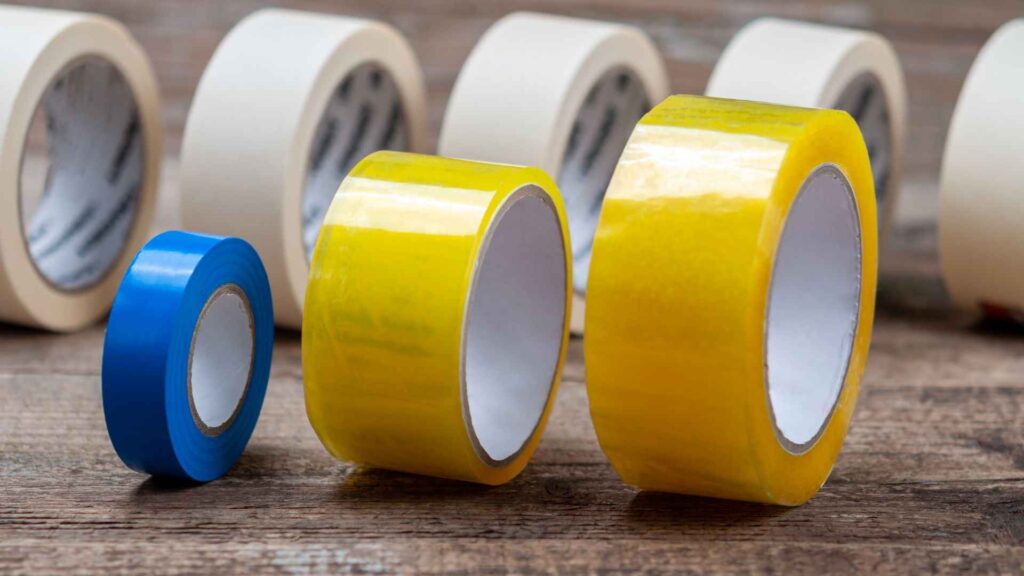
The options most people use for temporary pickleball court lines include adhesive tape, pickleball court chalk, temporary marker, spray paint, or temporary paint. Be careful to use these temporary solutions if you live in a moist or wet climate, as these temporary markings can fade away easily.
If you want to paint your pickleball court permanently, then you can also read our guide on : How To Paint Pickleball Court.
Indoor Temporary Pickleball Court Lines
If you decide that you are going to make your pickleball court indoors in your stadium, home, sports club, or gymnasium, then just like the outdoor court, many tools can be used to mark up the indoor pickleball court.
When it comes to indoor courts, the tape is the best choice to use, but if you are looking for additional options, here are the Top 5 quality options that you can take a look at.
The material to be used for the temporary pickleball court surface inside is as follows:
- FROG TAPE Multi-Surface Painter’s Tape
You should consider purchasing Green Frog Tape as a solution if you travel a lot. Green Frog Tape can be used on hard, thoroughly cleaned surfaces like the inside of a gym, and it is also an excellent choice to use on a variety of clean, smooth surfaces, including basketball courts, making it a great choice for temporary pickleball court lines.
- 3M Scotch Blue Painter’s Tape
It is a strong adhesive and versatile tape to use on any kind of surface with multi-color options. Using Scotch Blue Painter’s tape to build temporary pickleball court lines that will stay for a few hours can be the best option.
- Eco Walker Court Line Marker
It is the best and light tape to use for temporary pickleball court lines with bright visible colors. Eco Walker Court Line Marker is specifically produced to be used on sports courts and is easy to apply on the floor.
- Franklin Sports Pickleball Court Marker Kit
It is one of the best portable tapes dedicated to only pickleball with bright colors and is easy to handle on courts. Franklin Sports Court Marker can be easily wiped out after you are done with your pickleball court.
- Vinyl Pinstriping Tape
This tape comes in a variety of bright colors with long-lasting effects on the court but is still detachable. Pinstriping Tape is widely used tape for many purposes, and you can use it to adorn your portable pickleball lines and court boundaries.
Outdoor Temporary Pickleball Court Lines
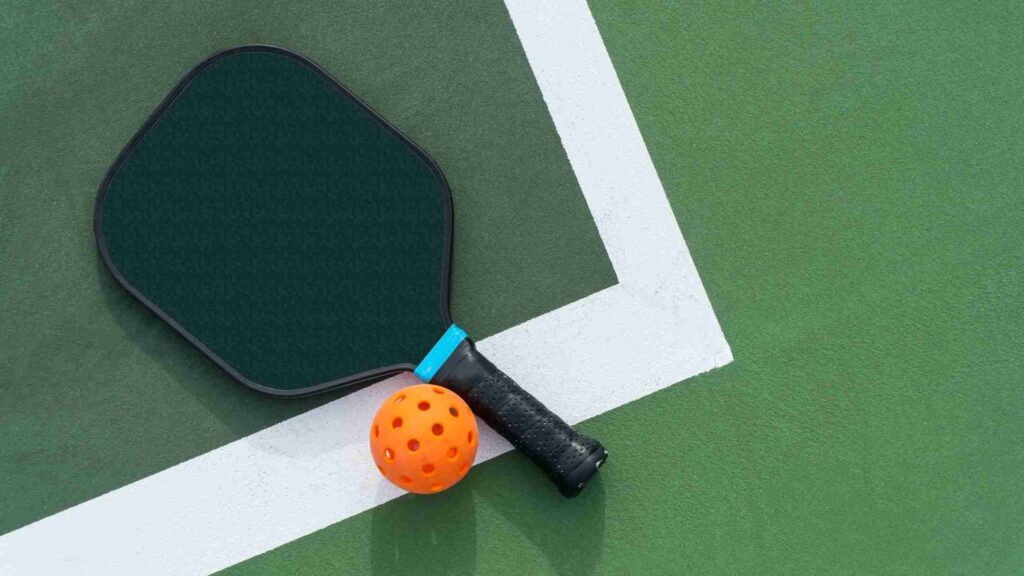
When you’re on your holiday or wherever else in the world, or perhaps you don’t have the resources to build a permanent pickleball court in your backyard, then building a temporary outdoor court is a great way to get some pickleball in while you’re away.
When making an outdoor court, many tools can be used to bring the court to life. When deciding what tool to use to create your court, think about how long you want the court to last.
Depending on how long you want to keep the court, you can use many different tools to build an outdoor pickleball court. Have a look at one of the best materials you can use to build the court.
- Sidewalk Neon Chalk
There are many surfaces where sidewalk chalk can be used, including concrete and asphalt, and Sidewalk Chalk can last for several weeks unless it is washed away by heavy rain or washed away by repeated foot traffic.
- Jumbo Marking Crayons
This can be the best non-toxic and reliable solution with vibrant colors to use. It gives thick lines on the surface of the court for a long time span.
- Tajima CR202B-P Chalk Rite II – Contractor Grade Ultra Thin Chalk
This chalk is lightweight and thin-lined for long-lasting use. Using a striping tool, you can easily install Contractor’s chalk. There is no red dye in the chalk, but the blue might be difficult to remove.
- Green Frog Tape
You can use the green frog tape on any surface that is free of dirt, dust, or moss, and you will be able to use it and easily remove it. It features sharp adhesive materials, and it’s easy to use.
- Wilson EZ Court Lines
A non-slip urethane composition makes it an ideal tape for use on corners and boundaries.
- Orange Masking Tape
Best high-contrast color tape with light and UV rays-resistant features to use on rubber and paved surfaces.
- Eco Walker Court Line Marker
You can use any of the court line kits which are mentioned for indoor courts from Eco Walker, as these kits can be used widely depending on the surface you are using or can be used as a template when chalking or taping down the court lines.
A lot of products mentioned above are essentially the same regardless of an indoor or outdoor court. To cut it short, using a court line kit and sideway chalk can help a lot and make all the work done for you.
Material Quantities
Keeping in mind the standard pickleball court dimensions according to USAPA, you are advised to get 198 feet of tape to build temporary pickleball court lines for boundaries, whereas the majority of tape rolls come in 180 feet.
If you’re using chalks or marking crayons, then you’ll need 2-3 sticks of it. For the vinyl court lines, you’ll need two sets of it, and lastly, if you’re using paint, then you’ll need around 20 gallons to complete the court.
Temporary Pickleball Court Set Up
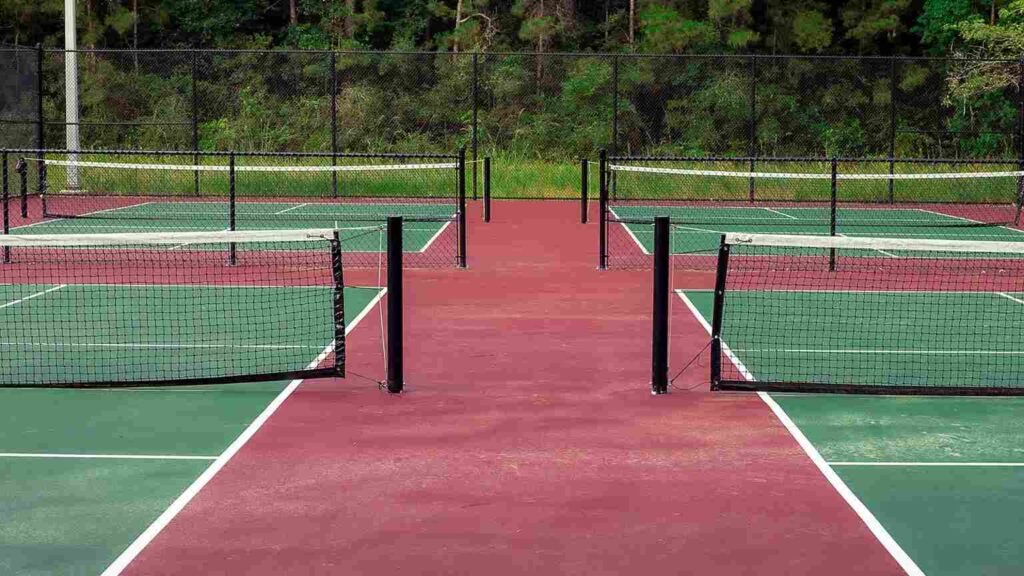
To set up temporary pickleball lines on tennis court you can go with any kind of existing court, like a tennis court, volleyball court, or badminton court. However, the most common way to do it is with a tennis court. There can be a number of layout options you can choose that are given from below.
One Pickleball Court On Tennis Court
A simple way to set up temporary pickleball courts is by lowering a tennis net by 2 inches and then marking tape lines down the sides of the court in order to create a rectangular court measuring 20 by 44 feet.
Using the ratchet on the post of the net, you can adjust the tightness of the net so that it can be lowered easily by tightening the center strap of the net.
Two Pickleball Courts Per Tennis Court
You can also easily fit more than two pickleball courts in a tennis court if the corners of the tennis court are not angled or curved much.
In that case, if you don’t find much space to fit the courts, then you can set up two courts left and right by separating them from the middle with a tennis court net to maintain boundaries.
Then, you’ll need two portable nets for the pickleball courts to put them in the center, as the tennis court net is being used to separate the two courts.
You can use the 3.0 Pickleball Net System, which is the best choice because it is very easy to set up and takes only a few minutes to install.
Four Pickleball Courts Per Tennis Court
If your tennis court has sharp boundaries that are not angled or edged, then you can go for it.
The process is essentially the same, and you will use the tennis court net as a barrier between the courts to stop the ball from going out of bounds.
Between each pickleball court, you will have approximately 8 feet of free space.
How To Draw a Pickleball Court
Make sure to follow the steps accurately to avoid mishaps and make your court the best looking than others.
1. Mark the dimensions
A pickleball court measures 20 by 4 feet, which is the same size as a badminton court, which is equivalent to the size of a pickleball court.
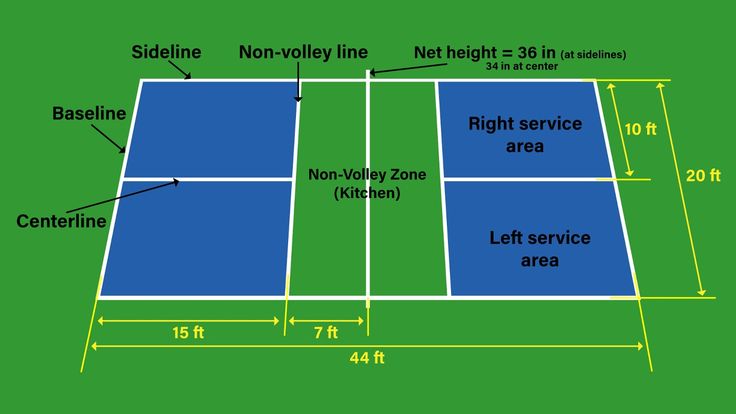
However, most professional players look for an area of dimensions 30 by 60 feet to get enough room to play pickleball.
2. Set Up the Net
Now that you have calculated the dimensions of your court and collected all of your supplies, it is time to assemble it.
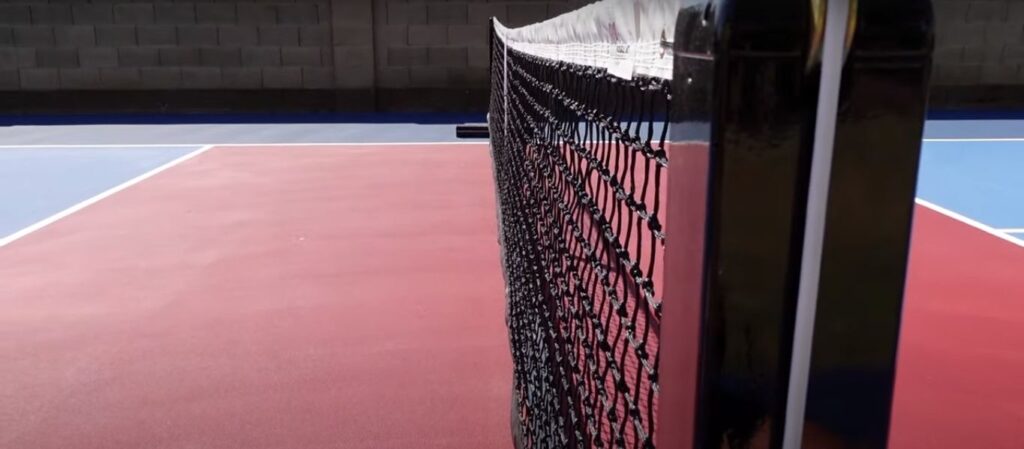
In the first place, you should put up the net, and it should be 34 inches high in the middle of the court, and it should serve as a reference point for the rest of the players.
3. Set Up the Baselines
Now measure each baseline of the court one by one. The lines should be 20 feet long, one on either end of the court, and this is where you’ll be serving from behind the baseline, so it is best to make the lines as straight as possible.
4. Set Up the Sidelines
After you’ve marked out each baseline, we are going to measure out the sidelines on each side of the court at 22 inches in both directions so that we can create the sidelines. Then connect one end of the baseline with the opposite end.
5. Set Up the Non-Volley Zone
As a next step, you are going to set up the no-volley area by measuring out 7 feet from the net on both sides of the net. Pickleball faults are most often caused by a line too thin on both sides of the net, so make sure you make this line thick on both sides.
6. Set Up the Service Area
It is now necessary to draw a dividing line from the middle of the no-volley zone line to the middle of both sides of the court, which will make the service area, starting from the middle of the no-volley zone line.

Now, you should be able to have a pickleball court that measures 20 feet across for the baseline, as well as a sideline 15 feet long for the no-volley zone and a 7-foot line to the net from the no-volley zone.
This is all you need on both sides of the net, so you’re all set now.
Why Are Pickleball Court Lines and Barriers Important?
Pickleball court barriers are essential to the game because they provide organization to the playing area. Pickleball dividers also help to prevent disputes between players and ensure that everyone is playing by the same rules.
If you are a pickleball player, you may have noticed that much of the time, the ball is on calls from the adjacent pickleball court, and it can be frustrating to have their ball land in your court when you are playing.
You will notice fewer interruptions when you play pickleball on-site with the help of pickleball court dividers. You can set up your own pickleball court dividers and pickleball court nets.
It is estimated that 90% of pickleball balls will not cross the pickleball court due to the self-assembling pickleball court dividers, which stand 30 inches tall. Even though there are still some high and bouncy balls that may bounce off, the number is relatively small.
The temporary pickleball lines and barriers also play a crucial role in determining where players can and cannot stand during gameplay.
FAQS: Pickleball Court Lines
How Can Pickleball Court Lines and Barriers Affect Gameplay?
The placement of pickleball court barriers for pvc court separation can impact gameplay by influencing the way players to position themselves on the court.
Knowing where the baseline is located can help players position themselves for effective serves, while the placement of the service area can affect the types of serves that are used.
How Do You Make Lines In Pickleball Court?
To make temporary pickleball court lines, you will need to first measure and mark the court’s dimensions using chalk or tape. Next, mark the pickleball court markings, including the baseline, sideline, and service line, using additional tape or paint. Finally, mark the non-volley zone or “kitchen” by measuring 7 feet from the net on either side and marking it with tape or paint.
How Long Are Pickleball Lines?
The baseline and sideline run the entire length of the court and are each 44 feet long. The centerline is also 44 feet long and divides the court in half. Parallel to the net, the service line is 22 feet from the baseline, making it 20 feet long. Finally, the non-volley zone line is a 7-foot area on either side of the net, making it 14 feet long.
What Color Line For Pickleball Court?
The color for pickleball tape lines is typically either white or yellow and is 2 inches in width. White lines are the most commonly used and are often used for indoor courts, while yellow lines may be used for outdoor courts where they are more visible against the ground. Some courts may also have additional lines in contrasting colors to mark the centerline and non-volley zone.
Conclusion: Temporary Pickleball Court Lines
In conclusion, temporary pickleball court lines offer a convenient and cost-effective solution for those who want to play pickleball but don’t have access to a permanent court.
These lines can be easily installed on various surfaces, such as concrete or asphalt, and provide players with a clear and defined playing area.
Additionally, temporary court lines are portable, making them ideal for those who want to set up a court in different locations or take them with them when traveling.
Overall, temporary pickleball court lines are a practical option for players who want to enjoy the game without the expense and commitment of building a permanent court.
You can use pickleball court barriers to structure the court, play pickleball in a more organized way, prevent disputes between players, enhance gameplay in a variety of ways, and facilitate your overall enjoyment of the game.








